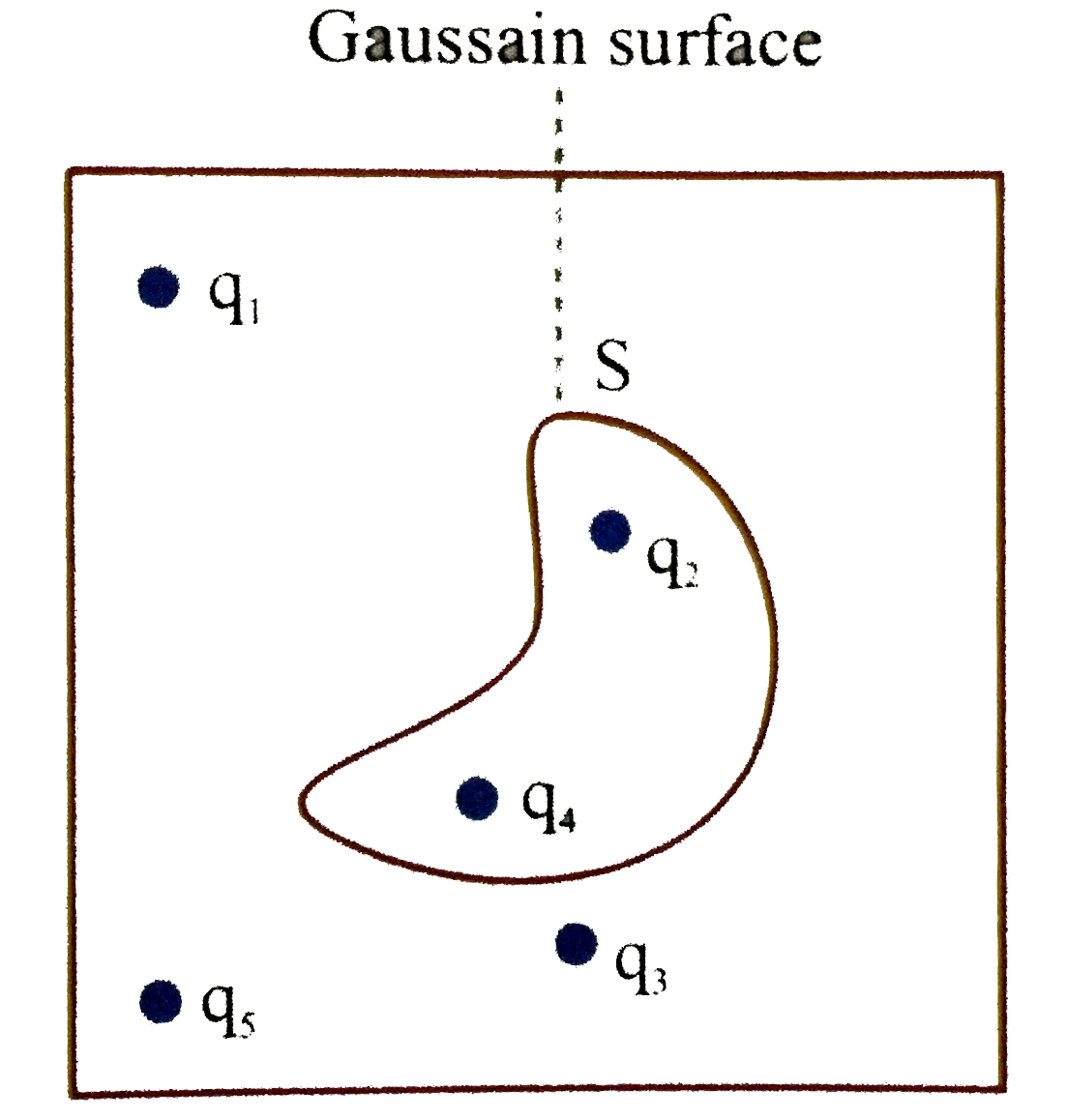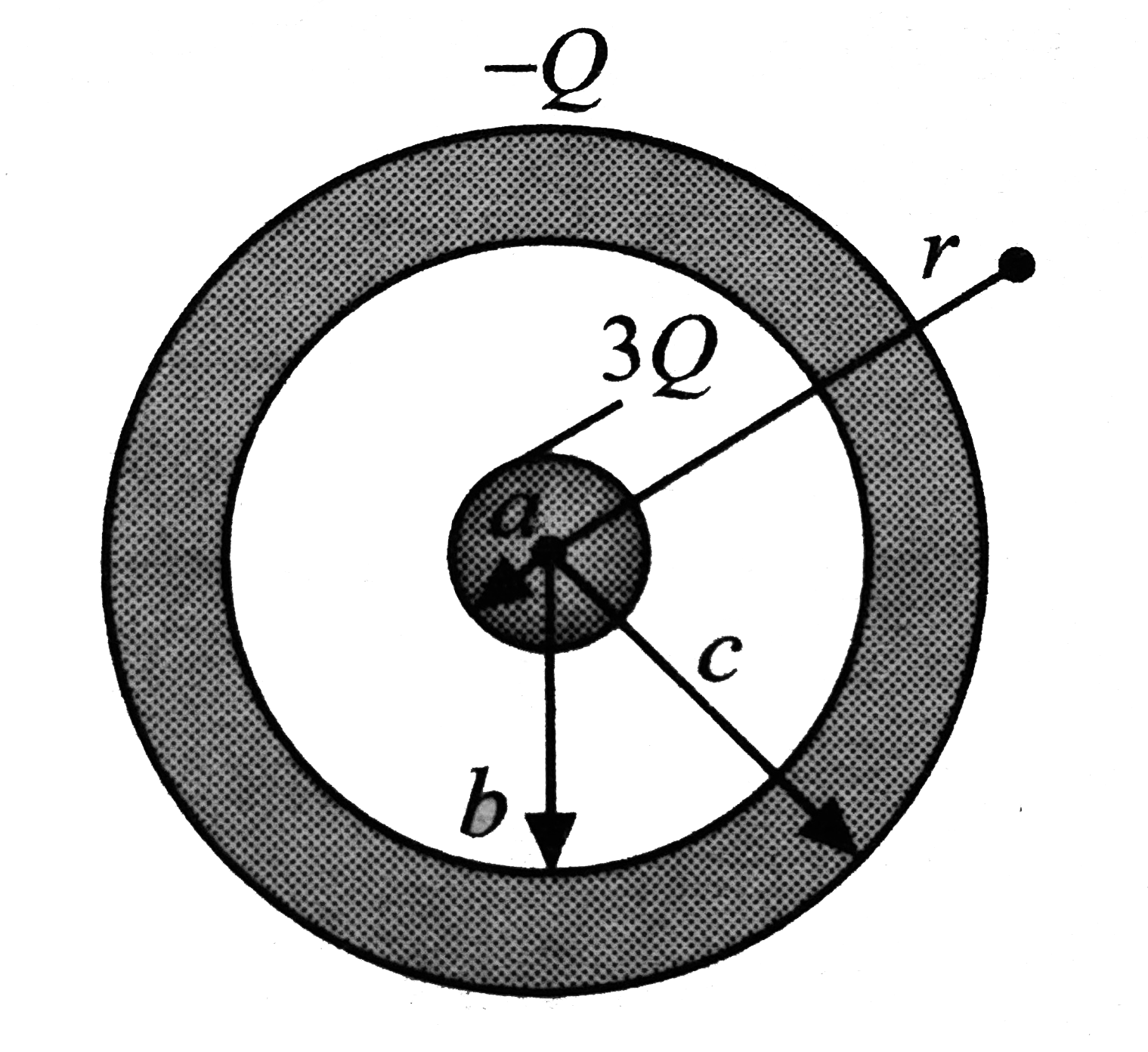In fiinding the electric field using Gauses law the formula ∣∣→E∣∣=qenc∈0|A| is applicable. In the Formula. ∈0 is permittivity of free space, A is the area of Gaussian surface and qenc is charge enclosed by the Gaussion surface. This equation can be used in which of the following situation?
Only when the Gaussian surface is an equipotential surface
only when ∣∣→E∣∣ is constant on the surface
only when the the Gaussian surface is an equipotential surface ∣∣→E∣∣ is constant of the surface
for any choice of Gaussian surface
The correct Answer is:C
To determine the situations in which the formula |→E|=qencϵ0|A| is applicable, we can analyze the conditions under which this equation holds true based on Gauss's Law.
1. Understanding Gauss's Law:
Gauss's Law states that the electric flux through a closed surface is proportional to the charge enclosed within that surface. Mathematically, it is expressed as:
ΦE=∮→E⋅d→A=qencϵ0
where ΦE is the electric flux, →E is the electric field, d→A is the differential area vector, and qenc is the charge enclosed by the surface.
2. Rearranging the Equation:
From the equation of electric flux, we can derive the formula given in the question:
|→E|=qencϵ0|A|
Here, |A| is the total area of the Gaussian surface.
3. Conditions for Applicability:
- Uniform Electric Field: The electric field →E must be uniform over the entire surface. This means that the magnitude and direction of →E do not change across the surface.
- Angle Between →E and d→A: The angle θ between the electric field vector →E and the area vector d→A should be zero. This implies that the electric field lines are perpendicular to the surface, leading to maximum flux.
- Equipotential Surface: The surface should be equipotential, which means that the electric potential is constant across the surface. This ensures that there is no potential difference along the surface.
4. Conclusion:
The formula |→E|=qencϵ0|A| is applicable when:
- The electric field is uniform across the Gaussian surface.
- The electric field is perpendicular to the surface (angle θ=0).
- The surface is equipotential.
Final Answer:
Thus, the formula can be used in situations where the electric field is uniform, perpendicular to the surface, and the surface is equipotential.
---
Gauss's Law states that the electric flux through a closed surface is proportional to the charge enclosed within that surface. Mathematically, it is expressed as:
ΦE=∮→E⋅d→A=qencϵ0
where ΦE is the electric flux, →E is the electric field, d→A is the differential area vector, and qenc is the charge enclosed by the surface.
From the equation of electric flux, we can derive the formula given in the question:
|→E|=qencϵ0|A|
Here, |A| is the total area of the Gaussian surface.
- Uniform Electric Field: The electric field →E must be uniform over the entire surface. This means that the magnitude and direction of →E do not change across the surface.
- Angle Between →E and d→A: The angle θ between the electric field vector →E and the area vector d→A should be zero. This implies that the electric field lines are perpendicular to the surface, leading to maximum flux.
- Equipotential Surface: The surface should be equipotential, which means that the electric potential is constant across the surface. This ensures that there is no potential difference along the surface.
The formula |→E|=qencϵ0|A| is applicable when:
- The electric field is uniform across the Gaussian surface.
- The electric field is perpendicular to the surface (angle θ=0).
- The surface is equipotential.
Thus, the formula can be used in situations where the electric field is uniform, perpendicular to the surface, and the surface is equipotential.
Similar Questions
The dimensions of 12∈0E2 (∈0: permittivity of free space, E: electric field) is-
View SolutionIf electric field around a surface is given by ∣∣→E∣∣=Q∈ε0|A| where 'A' is the normal area of surface and Q∈ is the charge enclosed by the surface. This relation of gauss's law is valid when
View SolutionGauss's law and Coulomb's law , although expressed in different forms , are equivalent ways of describing the relation between charge and electric field in static conditions . Gauss's law is ε0ϕ=qencl,when q(encl) is the net charge inside an imaginary closed surface called Gaussian surface. The two equations hold only when the net charge is in vaccum or air .
A Gaussian surface encloses two of the four positively charged particles. The particles that contribute to the electric field at a point P on the surface are
 View Solution
View SolutionThe dimensional formula for permittivity of free space (ε0) in the equation F==14πε0,q1q2r2 , where symbols have usual meaning is
View SolutionAssertion:- In a given situation of arrangement of charges, an extra charge is placed outside the Gaussion surface. In the Gauss Theroem
∮→Ed→s=Q∈ε0Q∈ remains unchanged whereas electric field →E at the site of the element is changed.
Reason:- Electric field →E at any point on the Gaussian surface is due to inside charge only.View SolutionGauss's law and Coulomb's law , although expressed in different forms , are equivalent ways of describing the relation between charge and electric field in static conditions . Gauss's law is ε0ϕ=qencl,when q(encl) is the net charge inside an imaginary closed surface called Gaussian surface. The two equations hold only when the net charge is in vaccum or air .
If the charge q3 and q4 are displaced (always remaining outside the Gaussian surface), then consider the following two statements :
A: Electric field at each point on the Gaussian surface will remain same .
B: The value of ∮→E.d→A for the Gaussian surface will remain same.View SolutionGauss's law and Coulomb's law , although expressed in different forms , are equivalent ways of describing the relation between charge and electric field in static conditions . Gauss's law is ε0ϕ=qencl,when q(encl) is the net charge inside an imaginary closed surface called Gaussian surface. The two equations hold only when the net charge is in vaccum or air .
The net flux of the electric field through the surface due to q3 and q4 isView Solutionfive charge q1,q2,q3,q4and q5 are fixed at their positions as shown in figure .s is Gaussian surface .The Gauss's law is given by ∮→E.→ds=qε0

Which of the following statement is correct?View SolutionGauss's law and Coulomb's law , although expressed in different forms , are equivalent ways of describing the relation between charge and electric field in static conditions . Gauss's law is ε0ϕ=qencl,when qencl is the net charge inside an imaginary closed surface called Gaussian surface. The two equations hold only when the net charge is in vaccum or air .
The net flux of the electric field through the surface isView SolutionA solid insulating sphere of radius a carries a net positive charge 3Q, uniformly distributed throughout its volume. Concentric with this sphere is a conducting spherical shell with inner radius b and outer radius c and having a net charge -Q, as shown in figure

a. Consider a spherical Gaussian surface of radius rgtc, the net charge enclosed by this surface is .............
b. The direction of the electric field rgtc is .............
c. The electric field at rgtc is ............... .
d. The electric field in the region with radius r, which cgtrgtb, is ...............
e. Consider a spherical Gaussian surface of radius r, where c>r>b, the net charge enclosed by this surface is ................ .
f. Consider a spherical Gaussian surface of radius r, whereb>r>a, the net charge enclosed by this surface is ................. .
g. The electric field in the region b>r>a is ................ .
h. Consider a spherical Gaussian surface of radius r<a. Find an expression for the net charge Q(r) enclosed by this surface as a function of r. Note that the charge inside the surface is less than 3Q.
i. The electric field in the region r<a is ................. .
j. The charge on the inner surface of the conducting shell is .......... .
k. The charge on the outer surface of the conducting shell is .............. .
l. Make a plot of the magnitude of the electric field versus r.View Solution
